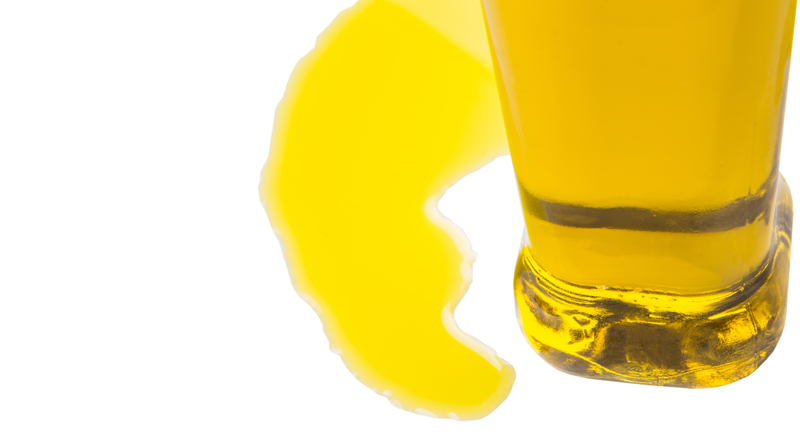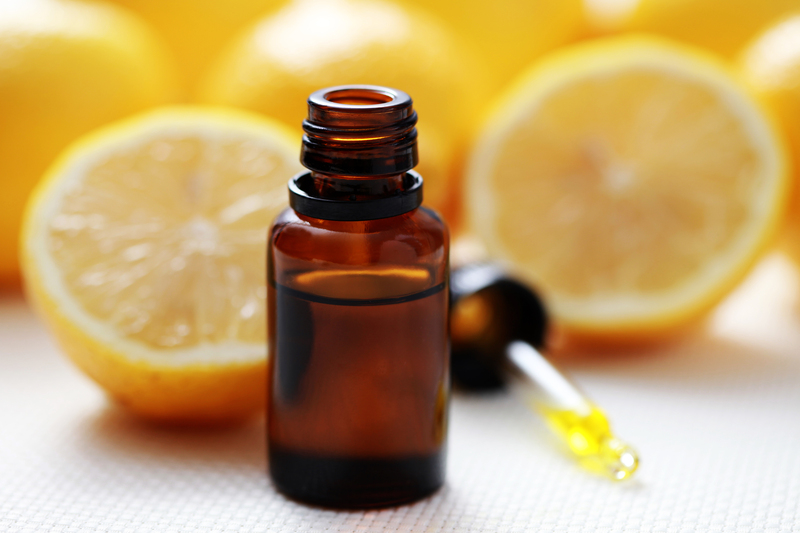Achieve a Gleaming Stovetop by Erasing Burnt-On Marks
Posted on 02/07/2025
Achieve a Gleaming Stovetop by Erasing Burnt-On Marks
A gleaming stovetop can make your entire kitchen look cleaner and more inviting. Over time, though, burnt-on marks and stubborn stains can dull its shine and make cleaning seem impossible. Whether you have a ceramic, glass, or stainless steel stovetop, learning how to erase burnt-on marks effectively is crucial for maintaining its pristine condition. In this comprehensive guide, you'll discover the best tips, tricks, and products for restoring your stovetop's brilliance and keeping those tough stains at bay.
Why Burnt-On Marks Appear on Stovetops
No matter how careful you are while cooking, spills and overflows are inevitable. When food or liquids hit a hot surface, they can quickly burn and become stubborn stains. The makeup of your stovetop and how you clean it will influence how easy it is to remove these marks. Common causes include:
- Boil-overs: When pots and pans bubble over, liquid can scorch on the surface.
- Sugar or sauce splatters: Sticky or acidic food residues can bond tenaciously to the stovetop.
- Grease and oil splashes: High-temperature cooking can cause grease spots to burn and harden.

Types of Stovetop Surfaces and Cleaning Considerations
Before tackling burnt-on marks, identify your stovetop's material. Each requires specific care:
- Glass/Ceramic Stovetops: Prone to scratching, demanding non-abrasive tools and gentle cleaners.
- Stainless Steel Stovetops: Durable yet can show streaks or discolor with harsh scrubbing or cleaners.
- Enamel-Coated Stovetops: Resistant to chipping but sensitive to strong chemicals or abrasive pads.
Essential Tools and Cleaners for Erasing Burnt-On Marks
*The key to achieving a gleaming stovetop by erasing burnt-on marks is preparation.* Stock up on the proper supplies, which may include:
- Microfiber cloths or soft sponges for gentle, non-scratching cleaning
- Ceramic or glass stovetop scrapers for stubborn, hardened stains
- Baking soda and white vinegar--classic, effective natural cleaning agents
- Dish soap and warm water for regular cleaning
- Commercial stovetop cleaners formulated for your specific surface
- Plastic knives or credit cards for safely lifting stubborn spots on glass without scratching
- Razor blade (used carefully) for glass surfaces only to remove ultra-stubborn marks
If You Prefer Natural Solutions:
You can often maintain a gleaming stovetop by erasing burnt-on marks naturally with everyday pantry staples. Baking soda, white vinegar, and lemon juice are safe for most surfaces. Their mild abrasiveness and acidity can break down stubborn burnt spots when applied with care.
Step-by-Step Guide: Remove Burnt-On Stains and Marks Effectively
1. Allow Surface to Cool Completely
Never attempt to clean a hot stove. Wait until your stovetop is completely cool. This protects both you and your stove's finish.
2. Begin with a Gentle Clean
Start by wiping away any loose debris or residue with a damp microfiber cloth and a few drops of dish soap. For most daily messes, this is all you need.
3. Create a Natural Cleaning Paste
For tougher, burnt-on stains:
- Mix equal parts baking soda and water to create a thick paste.
- Apply the paste to the stained areas and let it sit for 15-20 minutes. The paste will help soften and lift the burned residue.
- Wipe up the paste gently using a damp cloth or sponge.
4. Try White Vinegar for Extra Power
If baking soda alone isn't enough, spray the area with white vinegar before applying the paste. The fizzing action helps break down burnt food particles for easier removal, especially on glass and ceramic stovetops.
5. Use a Non-Abrasive Scraper or Blade
Once the paste has set, use a plastic scraper, old credit card, or (with extreme caution) a razor blade for glass stovetops to gently lift burnt-on marks. Always hold the blade at a 45? angle and avoid digging into the stove's surface. Never use metal blades on ceramic, enamel, or induction cooktops.
6. Rinse and Repeat as Needed
Sometimes, especially with heavily burnt residues, you'll need to repeat the process two or three times. Patience is key for achieving a flawless stovetop.
7. Finish with a Shine
Once all the marks are gone, polish the surface with a clean, dry microfiber cloth. For glass and stainless steel, a few drops of vinegar or a dedicated stovetop polish will add shine and help prevent future buildup.
Specific Tips for Different Stovetop Types
Ceramic and Glass Stovetops
- Never use abrasive pads. Stick to soft sponges, microfiber cloths, or specialty stovetop wipes.
- Razor blades are safe if used gently and only for severe, stuck-on marks. Specialized scrapers designed for glass cooktops are safer for regular use.
- Avoid excessive water; always wring out your cleaning cloth to prevent moisture seeping into electrical components.
Stainless Steel Stovetops
- Clean with the grain. Wipe and scrub in the direction of the metal's lines for best results.
- Avoid chlorine-based cleaners, which can cause pitting or discoloration.
- Restore shine with a tiny bit of olive oil or specialized stainless-steel cleaner after cleaning.
Enamel-Coated Stovetops
- Avoid harsh, acidic substances. Stick with mild dish soap, warm water, and non-abrasive pads.
- To erase burnt marks safely, let cleaning solutions sit longer to loosen stubborn residue.
Commercial Cleaners: Are They Worth It?
If you prefer convenience, there are dozens of commercial products that promise to erase burnt-on marks and restore a gleaming stovetop appearance. Many are specifically formulated for ceramic, glass, or stainless steel surfaces and combine mild abrasives with degreasers.
- Cerama Bryte and Weiman Glass Cook Top Cleaner are popular for glass and ceramic tops.
- Bar Keepers Friend can be used on enamel and stainless steel, but test in a hidden area first.
- Stainless steel polishes help prevent fingerprints and streaks after heavy-duty cleaning.
Always follow the manufacturer's instructions and do a spot-test before using any commercial cleaner extensively.
Prevent Future Burnt-On Marks for a Longer-Lasting Shine
- Clean up spills promptly. The sooner you wipe, the less likely a spill will harden and burn.
- Use correctly sized pans. Overhanging pots increase splatters and make cleaning harder.
- Reduce heat early. If you sense something boiling over, turn the heat down before it can stick or burn.
- Wipe surfaces daily. A quick once-over with a damp cloth prevents buildup and preserves that gleaming finish.
Deep Cleaning Routine: Monthly Maintenance
To keep your stovetop looking as good as new, set aside time for a monthly deep-cleaning session:
- Remove burner grates (if applicable) and clean them separately using dish soap and a scrub brush.
- Apply a generous layer of baking soda paste to the entire stovetop and let it sit.
- Revisit stubborn marks with a scraper or soft-bristled brush.
- Wipe thoroughly, rinse, and finish with a specialized polish appropriate for your surface.
*This regular maintenance will make burnt-on marks less likely to accumulate and your kitchen will continue to sparkle!*
Common Mistakes to Avoid
- Using steel wool or abrasive scouring pads--these can scratch and permanently dull your stovetop.
- Leaving acidic spills (like tomato sauce or lemon juice)--they can etch or discolor some surfaces if not cleaned right away.
- Overusing water on electric stovetops--excess moisture may damage components below the cooking surface.
- Ignoring manufacturer's care guidelines--always check your appliance manual for specific cleaning recommendations.

Frequently Asked Questions (FAQs)
Can I use magic erasers on my stovetop?
Magic erasers can remove some stains but may be too abrasive for glass or ceramic. Always test in a small area and use gentle pressure.
What's the safest way to remove burnt sugar stains?
Let a baking soda and vinegar paste sit on the stain, then carefully scrape with a plastic tool. Sugar can bond tightly, so patience and repeated cleaning may be required.
How do I remove burnt marks from the stove's control panel?
Use only a soft cloth dampened with mild dish soap. Harsh chemicals or abrasive pads could fade or damage the labels.
Conclusion: Enjoy a Gleaming, Burn-Free Stovetop
Maintaining a flawless stovetop doesn't have to be a daunting task. With the right methods for erasing burnt-on marks, proper tools, and consistent care, you can enjoy a gleaming kitchen centerpiece that elevates your entire cooking experience. Whether you favor natural solutions or trusted commercial cleaners, the key is regular, gentle attention. Embrace these expert tips, and your stovetop will always look its best--shining proof of your commitment to both cleanliness and culinary creativity.
Start your stovetop revival today and savor the satisfaction of a truly sparkling kitchen!




